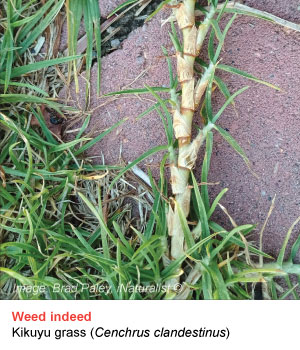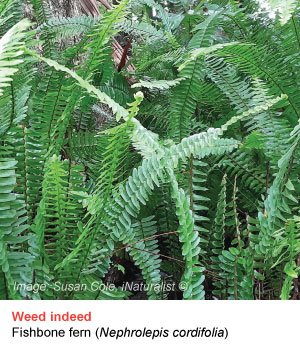Protect
Help #SayHighForest not "Bye Forest"
There are so many ways we can all help protect Blue Gum High Forest
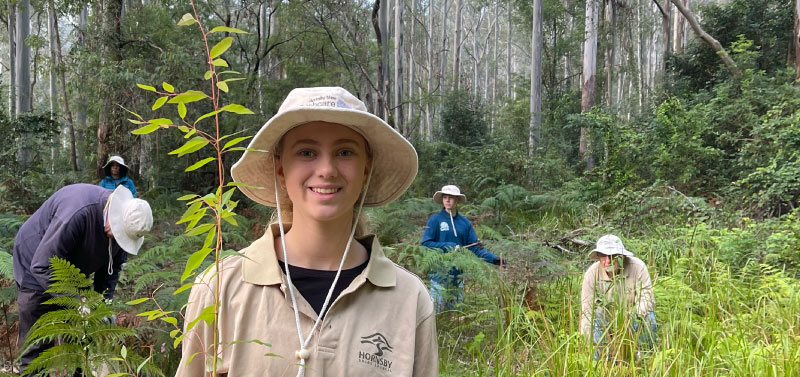
Becoming a Bushcare volunteer is an enjoyable way to learn about Blue Gum High Forest with like-minded people.
There are 12 Bushcare groups working in Blue Gum High Forest. Each group is guided by a specialist site supervisor employed by Council.
Blue Gum High Forest Bushcare Groups
- Beecroft - Cassia Grove - 3rd Monday of the month, 1–4 pm
- Beecroft - Chilworth Reserve - every Friday, 9 am – 12 pm
- Beecroft - Fearnley Park - 1st Friday of the month, 8–11 am
- Beecroft - Hull Road - 2nd Saturday of the month, 8–10 am
- Beecroft - Observatory Park - 1st Saturday of the month, 9 am – 12 pm
- Cherrybrook - The Lakes of Cherrybrook - 4th Thursday of the month, 9 am – 12 pm
- Hornsby - Ginger Meggs - 1st Saturday of the month, 1–4 pm
- Hornsby - Rosemead Road - last Sunday of the month, 9 am – 12 pm
- Normanhurst - Kenley Park - 1st Saturday of the month, 1–4 pm
- Wahroonga - Netherby Street - 4th Monday of the month, 9 am – 12 pm
- West Pennant Hills - Campbell Park - 3rd Saturday of the month, 8–11 am
- West Pennant Hills - New Farm Road - every Monday, 8:30–11:30 am
With a variety of days, times and locations available there is sure to be a Bushcare group to suit you.
If you want to help the forest but are short on time, why not come along to a community planting event!
Held on a weekend, community plantings are for everyone, young and old alike. Most events are booking-free, so you can simply turn up and lend a hand for any length of time (between 30 minutes and 2 hours).
Usually located on the edge of bushland in a Council park or reserve, the planting sites are suitable for those with a basic level of fitness and for children (under the supervision of their parent or a carer).
There are roughly three open community planting events held per year, including in rare forests such as Blue Gum High Forest. Sign up to receive Council’s free e-newsletters so you never miss a community planting event, or other great activities in our Shire.
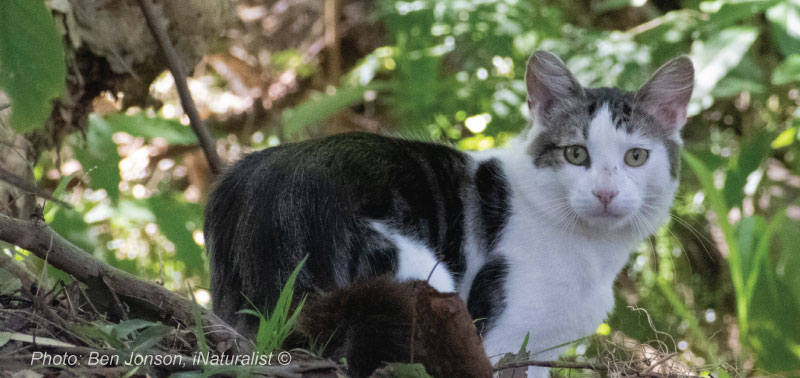
Protect your cat by keeping it within your premises!
Did you know the average lifespan of a cat kept indoors is 12 years, whereas cats allowed to roam outside live an average of three years?
For the safety of our forest’s wildlife it is also best to keep your cat indoors, especially at night.
“Roaming domestic cats kill about 60 million birds a year and feral cats are a major cause of mammal extinction.”
- Federal Government Threatened Species Commissioner (2017)
Cats found in Wildlife Protection Areas can be caught and the owner will incur a penalty of $180 under Section 3.0 of the Act.
Find tips for how to protect your cat and our wildlife in the Wildlife Protection Areas of Hornsby Shire brochure.
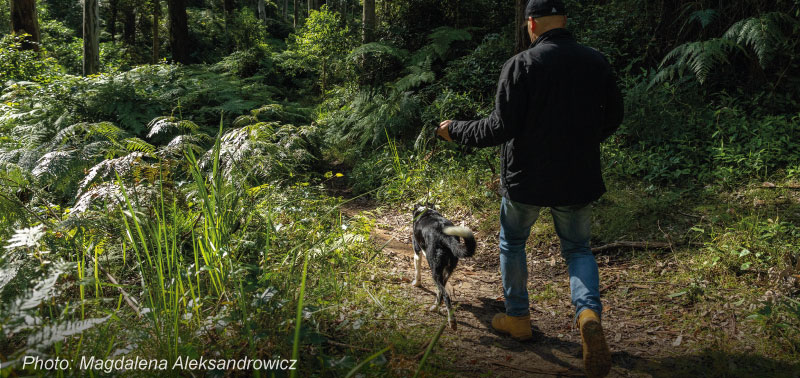
Keep dogs on leads, stick to the managed tracks and trails and remove their droppings when in bushland.
Dogs are NOT permitted to enter national parks in NSW, except for trained assistance dogs accompanying people with a disability. However, they are permitted in Hornsby Shire Council-managed bushland where it is essential that dogs stay on leads, stick to managed tracks and trails, and dog droppings are picked up and disposed of properly, away from the forest.
Why our forests don’t do, dog poo
Removing dog droppings is not simply for the comfort of other walkers. Other reasons to pick up and remove dog droppings include:
- Dog droppings add substantial amounts of fertilising nutrients to the naturally low-nutrient, native bushland. Overfertilisation reduces biodiversity by significantly boosting the growth of weeds, allowing weeds to drive out other plants (and the wildlife that depends on those plants). Added to the concentrated nutrients, the scratching made by dogs creates disturbed soil areas that further encourage weed growth.
- The nutrients from dog droppings also move in the groundwater and can encourage algae blooms in creeks and other waterbodies.
- Parasites present in dog droppings can live for years in soil where it has been left to break down, risking wildlife infection.
- The scent of dog droppings can scare away native wildlife, throwing the delicate ecosystem further out of balance.
- Dog droppings can attract foxes that kill native wildlife.
Why your dog needs to stay on a lead
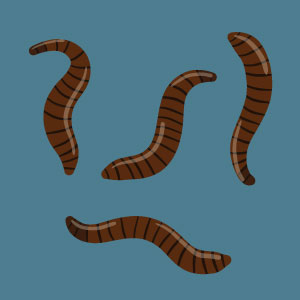 Even if you feel your dog won’t attack wildlife when off leash, the forest’s wildlife will still perceive your dog as a predator and they will become easily scared, modifying their behaviours that lead to a chain reaction, negatively impacting an entire forest ecosystem.
Even if you feel your dog won’t attack wildlife when off leash, the forest’s wildlife will still perceive your dog as a predator and they will become easily scared, modifying their behaviours that lead to a chain reaction, negatively impacting an entire forest ecosystem.
It is critical that your dog not only stays on a lead, but you both keep to Council-managed tracks and trails. When dogs rub against dense trees and shrubbery, or leave their scent by urinating or through droppings, this is enough to disturb native wildlife and further modify their behaviours.
Wildlife that feed, nest or travel on or near ground level are particularly vulnerable to dogs. This includes the beautiful superb lyrebird and the Bassian thrush, who both live in some Blue Gum High Forest areas of Hornsby Shire. If these animals are scared away, then the work they do to keep the ecosystem balanced, (like eating small critters that live on or near the forest floor) does not happen. This means that leeches can rapidly multiply, resulting in an unpleasant forest experience for us humans. More importantly, populations of insects that feed on, and can subsequently kill plants (such as young Sydney blue gum trees), may not be kept in check, endangering the long-term survival of the forest.
Owners of dogs roaming in Wildlife Protection Areas can incur a penalty of $330 under Section 14 of the Companion Animals Act 1998.
Download this Brochure for more info on caring for pets and protecting our wildlife in Wildlife Protection Areas of Hornsby Shire.
Download this list of Hornsby Shire Bushwalks you can do with your dog kept on its lead.
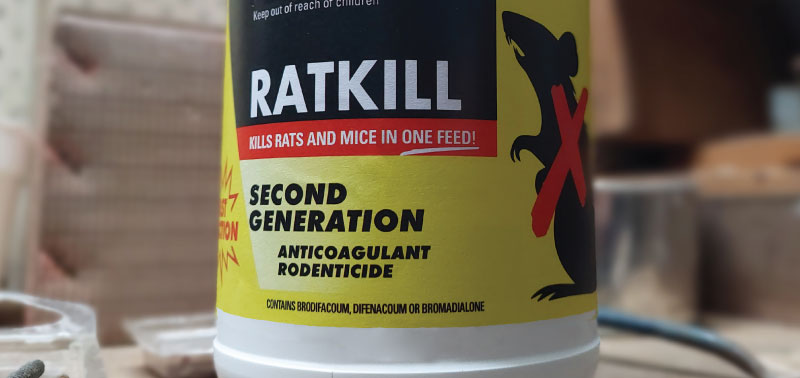 Never use second generation rodent poisons, as they can also kill wildlife, such as owls, which feed on poisoned mice and rats.
Never use second generation rodent poisons, as they can also kill wildlife, such as owls, which feed on poisoned mice and rats.
These rodent poisons are called anticoagulant rodenticides, and although the second generation variety of this product may “kill in just one feed”, the poison lingers in the environment and can continue to poison wildlife, even long after its original victim has perished.
When wildlife (such as the threatened powerful owl) feed on poisoned rodents, they themselves become poisoned. A recent study by Birdlife Australia found second generation rodenticides present in 37 out of 38 livers (97%) of dead powerful owls, often at toxic (60%) and sometimes potentially lethal levels (11%)1
Brodifacoum is the most common ingredient in second generation anticoagulant rodenticides in Australia and in another recent Australian study by Deakin University, it was detected in the livers of 55 out of 60 dead, native predatory birds (92%). 33% were found to have possibly lethal levels and significantly more had “possible toxicity” levels high enough to cause impairment.2
How to identify (to avoid) second-generation mouse and rat poisons*
- You can see the words “Second generation anticoagulant rodenticide”.
- You DO NOT see the words “First generation anticoagulant rodenticide”.
- The product lists either Brodifacoum, Difenacoum or Bromadialone as the active ingredient.
- The pack mentions wording like “Kills with just one feed”.
- The pack is likely to claim, “Fast action” even though the fine print may mention that it is likely to take “on average 4 - 7 days (or longer) to kill rodents after consumption”.
Sign Birdlife Australia’s petition to ask Bunnings to stop stocking second generation anticoagulant rodenticides; or write to your local member asking to change Australian laws
1Read about Birdlife Australia’s study of the impact of second-generation anticoagulant rodenticides on Powerful Owls
2Read about Deakin University’s study about the impact of second-generation rodenticides on predatory birds.
*Read Birdlife Australia’s guide of specific products to buy and to avoid.
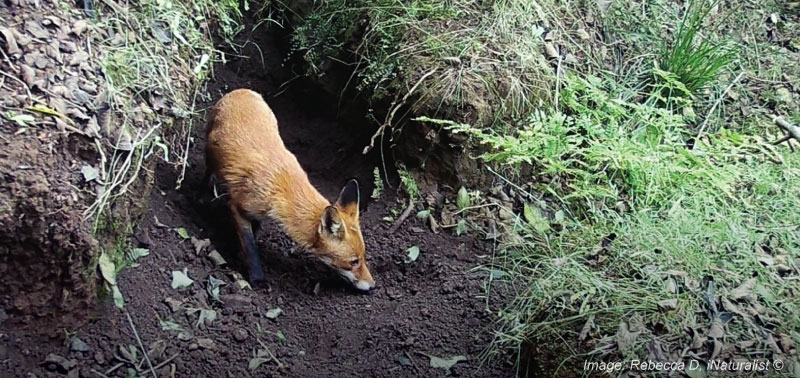
The red fox (Vulpes vulpes), introduced to NSW in the 1870s for recreational hunting, is a significant pest in all areas of NSW, including Hornsby Shire.
Active mostly at night time, these highly efficient hunters can decimate wildlife populations, including regional declines and extinctions of a wide range of native animals. Medium-sized, ground-dwelling mammals (such as wallabies) and ground-nesting birds (such as superb lyrebirds), and freshwater turtles are especially vulnerable to fox predation.
If you see a red fox, please report it using FoxScan. Information you record can be used to manage foxes more effectively and reduce the damage they cause.
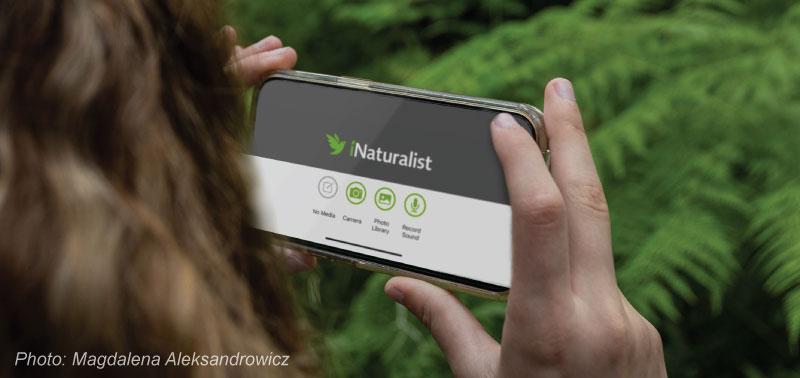
When visiting the forest, get your camera or smartphone out and record some of the biodiversity you encounter with iNaturalist. Hornsby Shire Council recommends using the iNaturalist.org website or the iNaturalist app (available on the iNaturalist.org website).
iNaturalist is a crowd-sourced identification tool to help you, scientists and members of the community learn more about the environment. Anyone can use iNaturalist to record and easily identify the plants, animals, and other living things in your photos and audio recordings.
It is available for researchers or for anyone wanting to find out more about nature. Confirmed observations become part of the Atlas of Living Australia, hosted by the CSIRO.
It’s very easy to use and is a great learning tool, for absolute beginners right through to experienced naturalists. It even has the capacity to identify unseen living things. For example, you can submit evidence such as photos of animal tracks, nests and scats, and audio recordings.
Visit the Hornsby Shire Council iNaturalist page
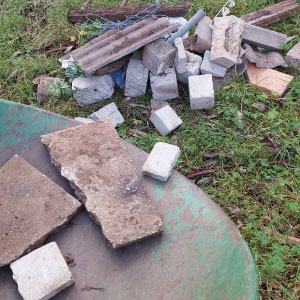
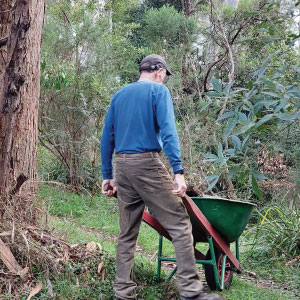
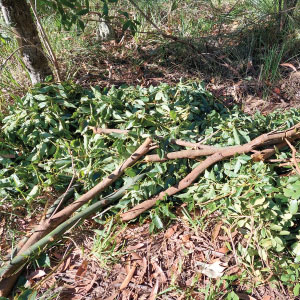
Never dump construction materials, landscaping and vegetation or rubbish in bushland - penalties apply. Call 13 70 30 to report dumped waste.
Dumping material on top of the forest’s natural ground surface can starve the soil of oxygen and light. Seeds can’t germinate without oxygen and roots and other living things below the ground need oxygen to survive. The patch of forest affected cannot regenerate and its health declines.
In addition, if landscaping and vegetation are dumped, this will likely spread weeds, further harming the forest and damaging its ecosystem.
Don’t simply assume your gardening or building contractor will do the right thing and dispose of materials and vegetation correctly. Always check.
It is an offence to be both the transporter and the owner of dumped waste, disposed of anywhere that is not a lawful waste facility.
Illegal dumping is punishable by on-the-spot fines, court-imposed penalties, and in some instances by imprisonment. Currently, on-the-spot fines for illegal dumping range from $2000 for minor offences to $8000 for more serious offences.
Go to our Illegal dumping webpage for more info.
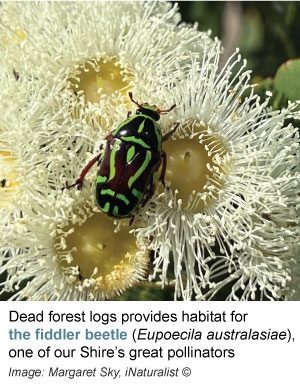
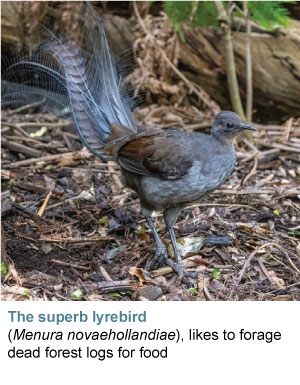
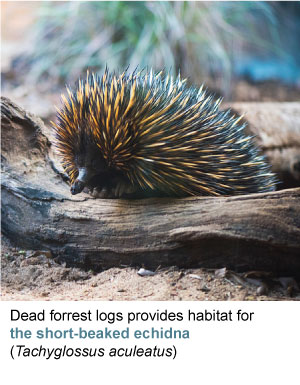
Don’t remove wood from the forest for firewood or for any other reason.
Even when wood is “dead” it is an essential part of the forest ecosystem. Dead wood provides:
- habitat for wildlife, such as the echidna
- food for insects such as the fiddler beetle, one of our Shire’s important pollinators
- vital nutrients in the soil to feed the forest’s many plants and trees when the dead wood decomposes.
Further to this, the insects that depend on dead wood to survive, themselves become an important part of the ecosystem’s food chain. For example, insects feeding on dead wood become food supply for the lyrebird attracting more wildlife to the area.
Report to Council any activities you suspect might be damaging Blue Gum High Forest.
Call (02) 9847 6666 or email hsc@hornsby.nsw.gov.au.
If you live near the forest, there’s even more you can do to help preserve it:
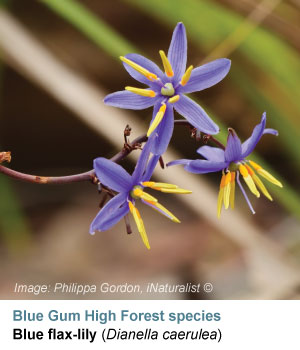
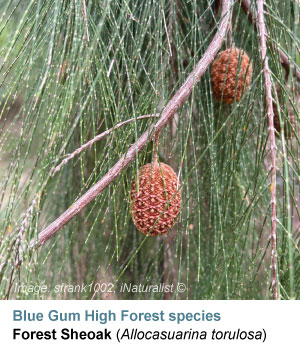
Plant some of the forest’s native species, such as forest oak (Allocasuarina torulosa), muttonwood (Myrsine variabilis) flax lily (Dianella caerulea) and wonga wonga vine (Pandorea pandorana) in your garden. This will help attract birds, mammals and butterflies.
Hornsby Shire ratepayers can take up the offer of free plants from Warada Ngurang Community Nursery, where volunteers and staff propagate the plants, both big and small, that grow in a Blue Gum High Forest. Pop them in your garden and you will be helping creatures such as moths, butterflies and native bees that feed on and help pollinate the forest’s plants. You will also be helping wildlife such as the rare glossy black-cockatoo, who depends on a handful of trees for its food, including the forest oak (Allocasuarina torulosa), a small tree that grows in Blue Gum High Forest.
Below is a list of tree and plant species native to Blue Gum High Forest that you could plant in your garden or on rural acreage. Most are grown at Warada Ngurang Community Nursery.
40 Blue Gum High Forest species
Subscribe to Hornsby Shire Council’s e-newsletter to never miss a free native plant giveaway.
It is extremely hazardous to throw lawn clippings and other vegetation into native bushland as it very often carries weeds and seeds - a significant threat to our fragile bushland. Our fantastic Bushcare volunteers spend hours every week removing weeds from bushland. You could help them and the forest by not letting your grass clippings or other garden vegetation enter bushland.
Mowing underneath Blue Gum High Forest trees prevents seedlings from establishing. Hand weed or carefully spot-poison weeds instead. Mowing through native forest grasses or understory destroys a vital component of the Blue Gum High Forest ecosystem. Never extend your yard boundaries into bushland reserves, as it will likely eliminate the forest grasses, ferns and other plants that belong to the ecosystem.
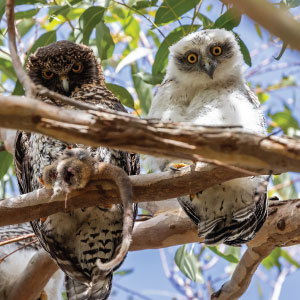
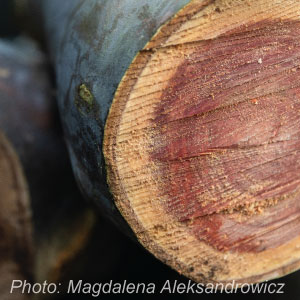
Please look after the trees of Blue Gum High Forest. If you are concerned about a tree on your, or your neighbour’s, property, please visit Trees on Private Property and find out about management options and whether a permit is required for any tree work. It is particularly important to avoid removing standing trees with hollows (alive or dead) and any branches or dense shrubbery near the hollows. This is the habitat that our precious forest owls and parrots need for breeding, and without these natural hollows we will lose them from our suburbs.
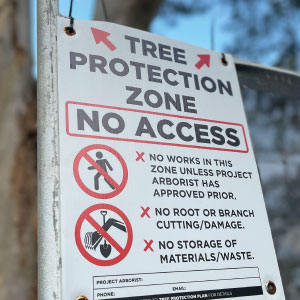
When pursuing building activities or landscaping, all efforts should be made to protect any trees, in particular Sydney blue gums and other canopy trees of Blue Gum High Forest. An arborist can assist to ensure these are kept in a safe condition.
Remove weeds from your own garden to stop them spreading into the Blue Gum High Forest.
Some of the most threating weeds to the Blue Gum High Forest include:
Rainwater falling onto hard surfaces, such as buildings and driveways, is unable to soak into the ground. This water, known as ‘stormwater run-off’, is channelled into stormwater pipes or flows quickly over the hard surface and into adjacent areas. Run-off into Blue Gum High Forest, or any bushland area, can cause soil erosion, prolific weed growth and native plant death due to excess moisture and nutrients.
Installing a raingarden on your property can help the forest stay healthy. Raingardens protect forests and bushland by capturing, slowing down and filtering stormwater run-off before it enters our precious natural areas.









